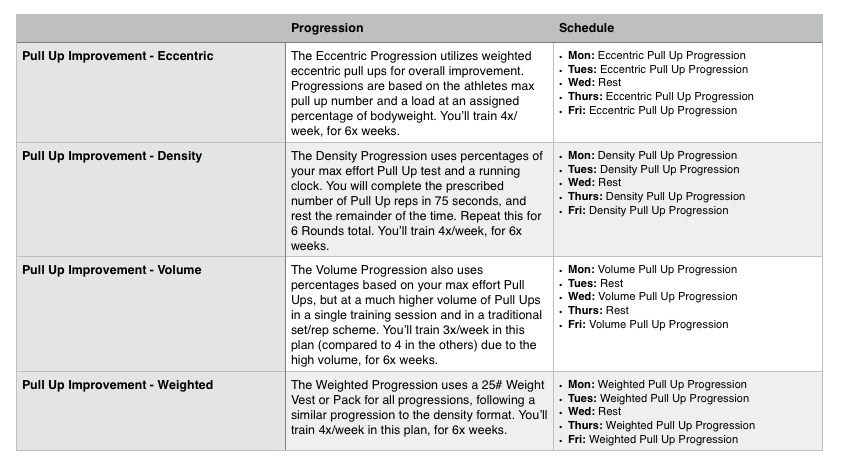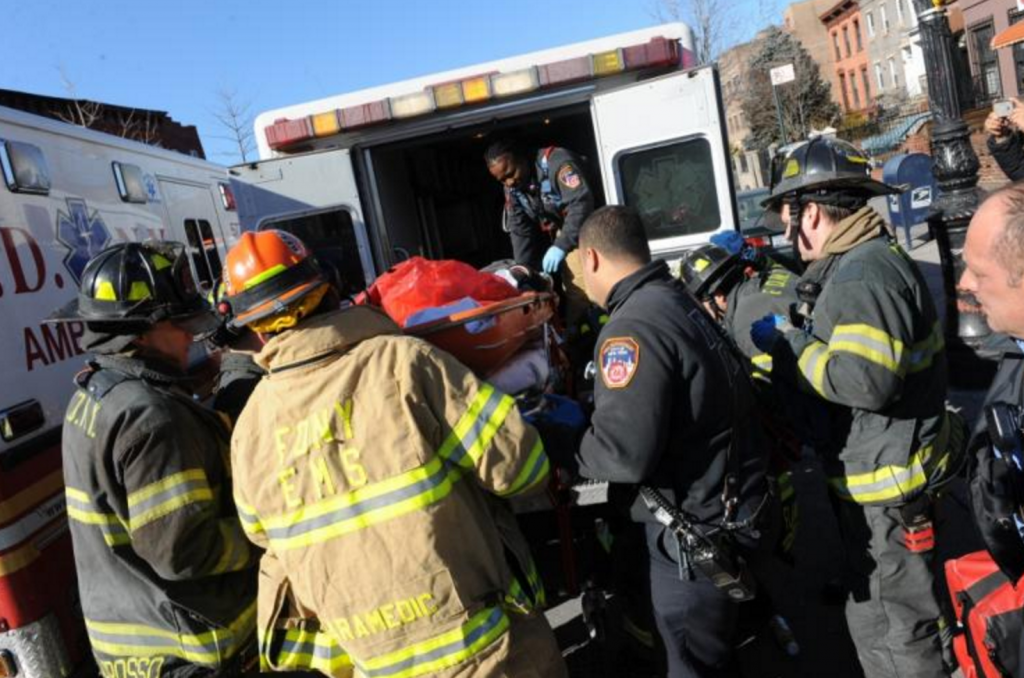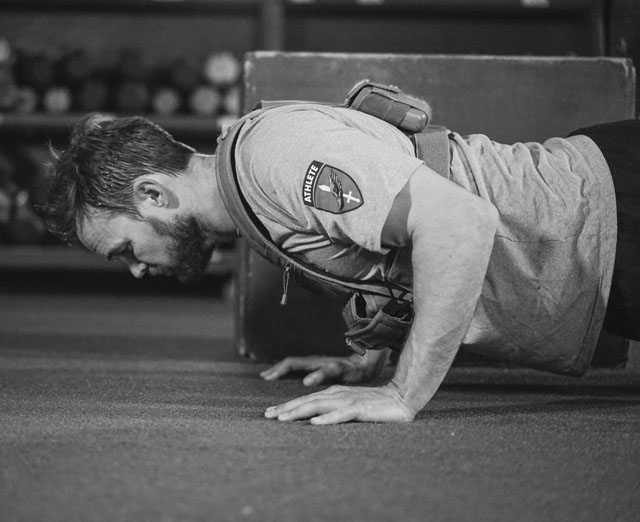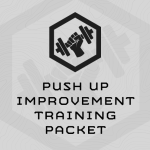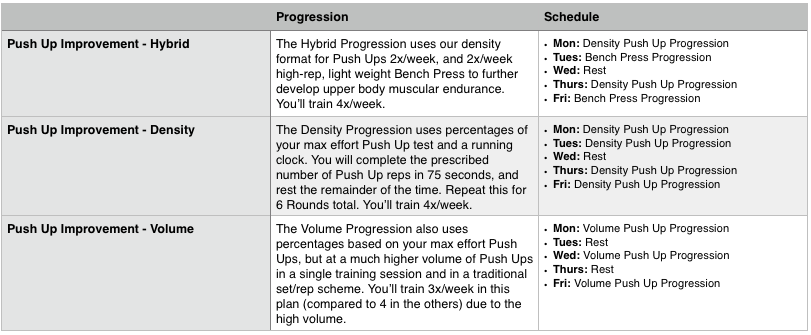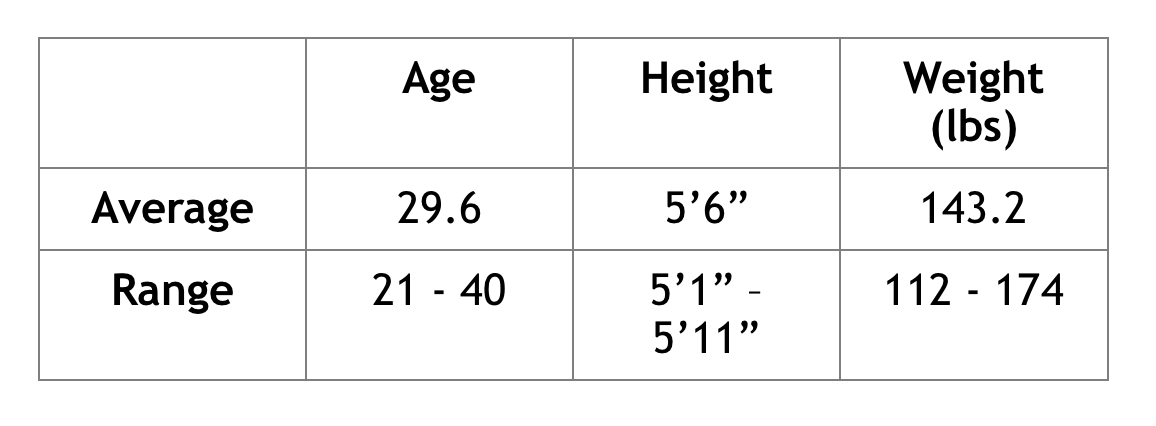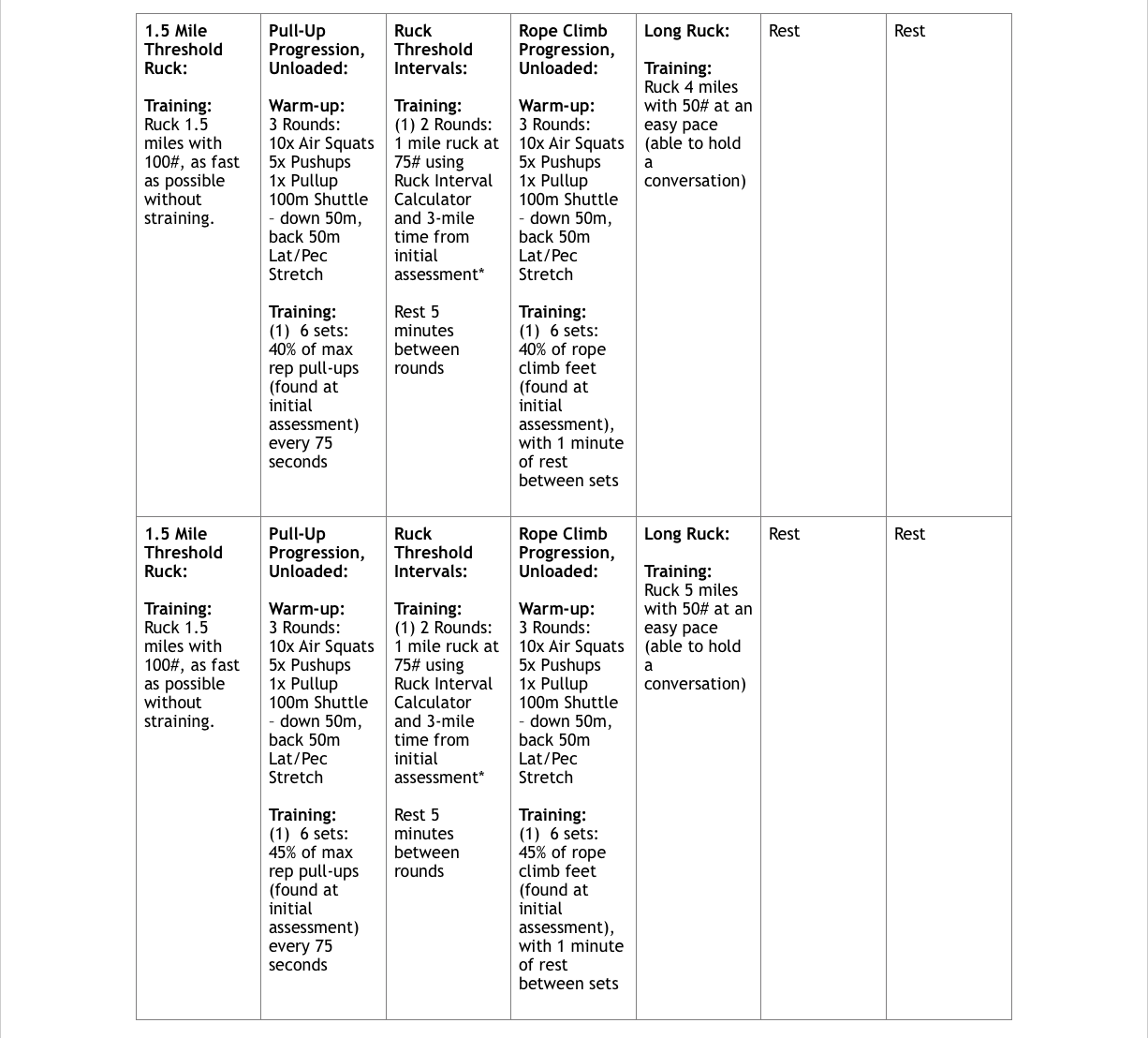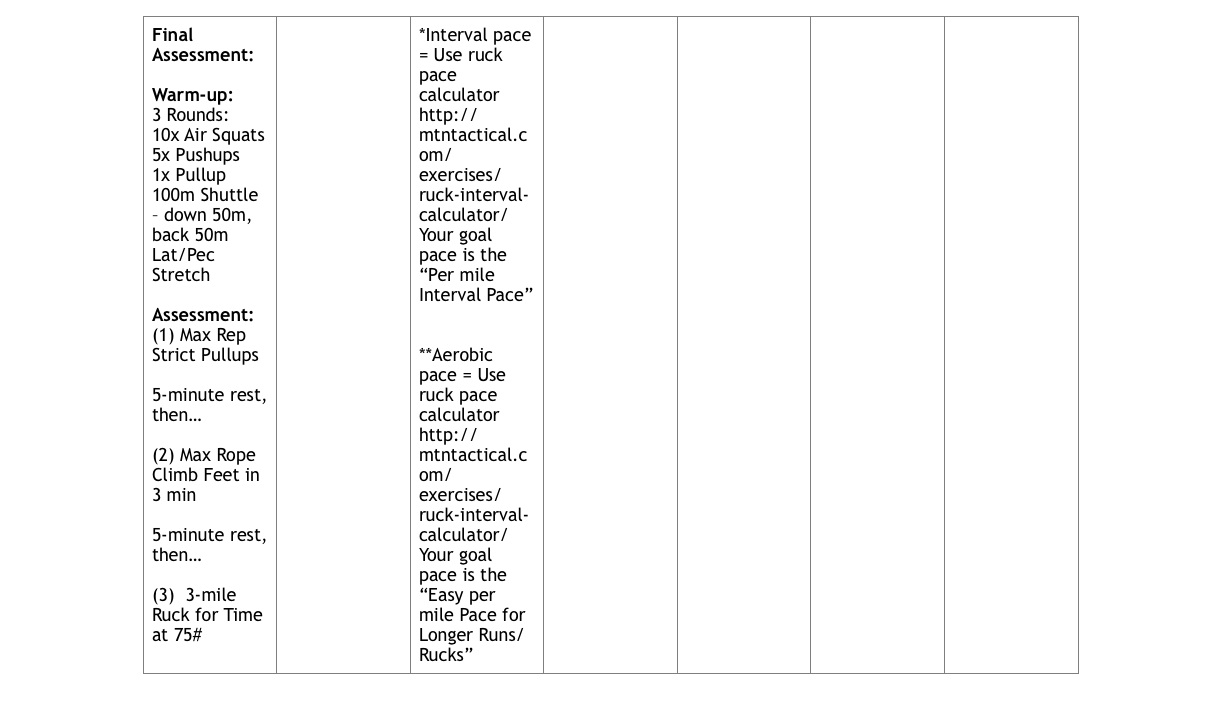KUDOS ON THE ATHLETE’S SUBSCRIPTION PACKAGE
“Thank you for putting together such a solid platform for fitness. I’ve PTd and worked out my entire life and have never had such well planned programs. Been well worth the price. Thank you.”
QUESTION
Hello,
I’m looking at the SFAS training packet and have a question about the timing. If I sign up via rep-63/18x I have to go through OSUT, Airborne, and SFPC before I can even attempt SFAS. If I do this 10-month program, how do I vary it or maintain during those 5 months or so of just going through all the basics hurdles?
Thanks,
ANSWER
Several 18x guys have asked the same question. I always recommend they complete the
Ruck-Based Selection Packet in order, finishing the Ruck-Based Selection Training Plan directly before basic. You’re going to be overtrained for basic, but you’ll have an incredible base going in to the rest of the pipeline. The problem is I’m not sure you’ll have the time bandwidth to complete the Ruck Plan prior to SFAS given your schools, required PT and other responsibilities. If you do have time, you can revisit the final 4-5 weeks of the Ruck Plan directly before SFAS.
Understand the packet will not only build physical fitness, but also mental fitness. Even if you don’t get the time to re-visit the final plan before SFAS because of required training, having this base and experienced the packet ahead of time will be a huge asset at SFAS.
– Rob
QUESTION
Hello sir, I was looking through the programs to train up for bortac, I see you have a program specifically for the selection. My question is what is the best program to do a year out from selection, I was looking at the sfas program which is 10 months and then do the bortac program 8 weeks out. I have purchased the subscription and have access to all programs but I do not see the SFAS program. Any help or advice would be appreciated, thank you?
ANSWER
A couple options.
2) Complete the
Greek Hero Plans (all 6 of them) in order starting with Hector. This is 42 weeks of programming … then complete the BORTAC Selection Plan directly before selection.
The Greek Hero plans were first tested via our day-to-day Operator Sessions for SOF/Military Athletes. Given BORTAC’s rural mission set, I consider BORTAC “green” athletes under our
5 Types of Tactical Athletes – same as military SOF like Green Beret/SFOD-D, etc.
– Rob
QUESTION
Rob,
Since I got hurt in Ranger School in early January, I’ve been working out on my own plans, loosely based off some of the training events I did under your Ruck Based Selection plan, and trying to rehabilitate my injury. Short version is torn subclavius muscle in my left chest, left collarbone shifted about two inches north of its normal position. I thought I had put myself in a good place after six months, so I attended my unit’s Pre Ranger Course. However, I was failed on my pushups test by two separate graders. The requirement is 54 reps. On my first attempt I did 57, with 51 counted, and on my retest did 51, with 48 counted. Both graders advised me that I was not locking out my left arm fully. I can do pushups to full extension, but I cannot actually tell if my left arm is locked out or not. I went to my unit’s physical therapist, who wants me to undergo a dry needle treatment, but she had no specific guidance on working out. To be more clear, her guidance on working out was to do as much as I could to keep my arm moving through a full range of motion on a daily basis.
This is an extremely frustrating situation for me, as I am more than capable of meeting the requirement, but simply am not able to tell if my arm is extended fully or not. I have never failed to meet the standard on a Ranger PT test until now. Since my PT has no specific workout plan she wants me to follow, do you have one that you would recommend? The only things that still cause significant pain is overhead press and dips (I believe they compress my collarbone at an awkward angle) but I am fully functional. In the eight weeks leading up to Pre Ranger I ran and ruck ran over 100 miles and worked about 2500 pushups. I am fairly skinny, since I’ve been running to prepare for Pre Ranger, but now I am unlikely to go back to that course for a calendar year, per my commander and the PT.
I was thinking I’d like to do a long workup like the packet you offer for the SFOD selection, because it’ll run the gamut of endurance and strength but finish out strong with an endurance plan that would have me in ideal shape for Ranger next year. The only thing I don’t have current stats for of the assessments in that plan is the bodyweight bench. Do you have any advice or a better plan for someone in my situation? I do pushups daily at low volumes, as well as rehabilitative exercises, to restore mobility, but I don’t have a solid plan right now. Thanks for your time!
ANSWER
This is a tricky one, as I’ve got nothing to ensure your elbow is locked out. However, being able to do more push ups will give you more opportunities to get it right for the graders at Ranger School. You’re in a frustrating place … but have faith there’s a reason and see this as an opportunity.
Moving forward … I’d recommend you move away from a focused train up – it seems you hammered for a while and my sense is your body and mind could use some variety. I’d recommend the plans in our
Green Hero Series, until 7 weeks out from Ranger School, and then complete the
Ranger School Training Plan directly before.
You could supplement the Greek Hero plans with push ups 2-3x/week. I’d think volume, per the Ranger School standard … and work up to a deck of cards at a sitting. turn over 2-3x cards, do that many push ups. Aces count as 15x reps, face cards count as 10x. A full deck has like 500+ reps.
The Greek Hero plans include plenty of strength, work capacity, endurance (running/rucking), Chassis Integrity and Tactical Speed/Agility.
– Rob
QUESTION
Hi Rob. I am a long time subscriber to your plans. Have never reached out with a question because all of your stuff works so well and makes so much sense. Your workouts are consistently my main focus for hiking, goruck, ocr, and just trying to be badass.
However, one question for you today: what is the game plan with the peter work out? I did not notice an explanation of the focus when I was reviewing the plan. Also, the workouts where we do 20 reps of benchpress and squat, what are they training for? Endurance? Strength?
Thanks so much.
Love your work.
ANSWER
Peter deploys our Super Squat strength progression for the Back Squat and Bench Press. MTI has developed
7 Different Strength Progressions thus far and the Super Squat progression is one of the most efficient for pure relative strength we’ve developed.
Warning … the bench press is more painful than the back squat!
– Rob
QUESTION
ANSWER
QUESTION
I’ve been following your sfod-d selection training packet now for about 9 months. I’ve completed up to the last 8 week program which is the actual selection prep portion. Since I am not looking to tackle that portion just yet I wanted to hear a recommendation from the pros (you guys) on what my next step should be. I was thinking of repeating the cycle over again and saving the selection prep until it’s needed. However, I was curious as to what the experienced opinions were at mtn tactical. If you need a little more context as to my level of fitness I completed the program thus far injury free and as prescribed. I’m also currently active duty and have been training at the operator fitness level for a few years. I would really appreciate your feedback!
Thanks,
ANSWER
Unless you’ve got a selection looming, I’d recommend you complete the
Greek Hero series of plans. These represent our day-to-day programming for SOF-level military athletes.
– Rob
QUESTION
I have to take my final PFT next week. We were all notified a week ago as part of the new implementation of the new policy. Attached are my current scores. I am struggling to improve my pushups and even though I meet the minimum my form really tanks after about 15. Is there a plan you recommend to help me improve my pushups over the next two weeks?
As of this week I have been training three days a week doing circuits: one day was pullup pushup circuits maxing out reps with a one min break as many sets as I could ; the other two days I did pyramid type circuits – 1min normal pushups 1min situps max followed by 1min diamond pushups and 1min wide pushups (in the pushup sit up set) after a minute of each set I went down to 30s then 15s and back up to 1min.
I there a plan you recommend I came up with this workout based on some articles I read, but my goal is to have about 30 solid pushups come test day.
Thank you so much!!
ANSWER
I don’t have a magic push up improvement program. But over the years we’ve had good success with the push up progression deployed in our military and other tactical PFT training plans.
For you specifically I’d recommend the USAF PFT Training Plan.
This PFT matches your PFT, with the exception of the 220 yard sprint. It has 1 min push ups, sit ups and a 1.5 mile run. The plan trains all three events.
Good luck!
– Rob
QUESTION
I’ve recently been recommended your online training programs. I’m wondering if you could help me narrow down the correct program for myself as I have 1 year remaining in college and plan on enlisting in the Army after graduation. I’m currently pursuing either an 18X or Option40 contract and want to select the best program to prepare myself for qualification. What would be your recommendation at this stage in my training? I plan on doing the monthly subscription once I’ve found a good program.
ANSWER
These are solid, intense training plans which will build your relative strength, work capacity, military endurance (running/rucking) and tactical chassis.
The plans in the series can be purchased in the packet linked above or individually. As well, they all come with the 190+ other training plans and programming course you get access to with an
Athlete’s Subscription.
– Rob
QUESTION
Rob, I’m currently working through the lower back rehab program (under the general category). Is there any issue with integrating running with that program, and if so any particular times when it would be better to run or not run? I wouldn’t see doing it on backpack days, and time/distance would vary depending on back pain level.
Thanks,
ANSWER
Everything depends upon your back. You can include running – 2-3x a week, in the afternoon/evenings. – Rob
QUESTION
I’m looking for a short-term training plan and I’m hoping you might have something that fits. I’m a paramedic with a service that has occasional openings to join a TEMS (tactical) team. Obviously, this requires a specific fitness test and I am wondering if you have any plans that would fit the testing.
The testing includes AMRAP pushups, AMRAP pull-ups, max time plank, single best vertical jump, the beep test and single best grip strength. I already have a fairly comprehensive workout routine so all I need is a program to max my numbers for the testing in as short a time as possible (we don’t often have much notice when they are doing a TEMS selection).
Do you have any programs that would fit with this?
ANSWER
I don’t have a plan that addresses the plank, but here would be my suggestion:
– Do a Max Time plank and note your time.
– Do 5 Rounds, 50% of your Max Time, 1 minute rest. Do this 4x days in a row, then Re-Assess and start again.
I also don’t have a plan for the Vertical Jump …. and my only suggestion would be to youtube the heck out of technique and make sure yours is dialed.
Grip? My guess is you’ll be using a hand dynometer … the new
USAF Battlefield Airman Assessment for TACP also has a hand dynometer assessment. We use sandbag farmer’s carries to train for it in that plan. You can also use heavy farmers carries for time … 75# or greater dumbbells – Do 5 rounds of 1 minute carry, 1 minute rest. When you can make every working interval, get heavier dumbbells.
Good luck!
– Rob
QUESTION
I’m very interested in your Mountain Athlete training plans but had some questions about which plan would be most appropriate for my current situation.
Personal Info
Male 27 yrs old, 6’1″ 165 lbs
Rockclimber – 5.10-5.11 ish climber, trad and sport
Alpine climbing trips occasionally throughout the year
Strong background in running, have been out of training for some time.
Goals
Looking to get into a routine that I can use when out of town with limited access to the gym at home and with limited time. While out of town I work 7 days/week 13 hours/day, so would like to make the most of the 1 hour or so that I can devote to working out. 6 days/week workout is no issue. I’d like to maintain as much of my climbing fitness as possible while building an overall base that will allow me to make the most of any of the trips I am able to take. These are often rock climbing/cragging, but I do get opportunities to tackle alpine objectives, ice/mixed climbing, hiking, trail running – depending on time of year and location.
The long and short of it is I want to keep up as much of an All-Mountain base as possible without becoming too targeted on any one particular specialization.
Facility
I am currently working on out of town projects (North Slope, Alaska right now) and generally only have access to pretty basic hotel style gyms. I had looked at the mountain base – Helen program, but it seems like a barbell set is required, which I often do not have access to. Currently the gym I have daily access to has:
Dumbbells – up to 55lbs
Kettlebells – 25, 35, 45, 60 lb
Good floor space
A wide assortment of weight machines
Pull-up/dip setup
Treadmills, ellipticals, stairsteppers, cycle machines.
There is a larger gym nearby that I could probably make time to go to once/week that has a treadwall for climbing as well as a set of barbells I believe. I can also run outside as much as needed.
I would also be interested in a program that I can implement when I return home and have access to more equipment and time and am able to turn up the time commitment to training a little bit as well.
I hope this information helps and I look forward to hearing from you. it seems like you guys have put together some great programs and I’m looking forward to working with you.
Thank you,
ANSWER
Our day-to-day fitness programming for all-around mountain athletes not training for a specific event is what we call “Mountain Base” – and is the focus of the training plans in the
Greek Heroine Series. These plans concurrently train strength, work capacity, chassis integrity, mountain endurance (running, uphill movement under load), and climbing fitness.
However, these plans require a full gym, and bouldering gym – so you’re equipment restrictions would limit you.
We have several limited equipment plans and I’d recommend 2 for you:
1)
Humility: Humility comes from our tactical side, but is an awesome plan which will also transfer well to the strength, work capacity and endurance demands of mountain athletes.
2)
Afghanistan Pre-Deployment Training Plan: This is the plan I developed for US soldiers with deployment orders to the mountainous areas of that country. It’s a limited equipment training plan (you’ll need a sandbag) which could be deployed at any motel with a little creativity. Sandbag? I take one of ours along when I travel and fill it with gravel, dirt, sand, rocks, or whatever. You’ll need to be resourceful.
Good luck!
– Rob
QUESTION
Coach,
I recently used your APFT plan to increase my run times, and dabbled with the Ruck Based Selection to prepare for some events before I commissioned. I am waiting to attend the Basic Officer Leader’s Course (BOLC) for Armor Officers at Ft. Benning. I intend to compete for a slot for Ranger School, which is based on how well I do and also APFT scores, and scores on 5 miler, 12 mile ruck, etc. I have 10 weeks to prepare before I enroll in the course and I have a general level of fitness (barbell-based strength is a strength, running/endurance on the weaker side).
Upon entry, we have an Army PFT, and then can choose to enroll in the pre-ranger PT/course with the unit on base (and follow on assignment comes in 2-3 months after we start BOLC). I wanted to know what you recommend, whether doing regular Operator Sessions, Ranger School Prep packet, for the ~10 weeks I have before attending, or concurrently while attending!
PS I find that if I drop weights and only do bodyweight, I put on some weight a little faster!
If you’re still reading, I know it was long – thanks for your time!
ANSWER
We haven’t build a specific course for BOLC yet – it’s on the list … but based on what you describe from what we have built I’d recommend the
Air Assault Training Plan directly before you report. This 6-week plan has specific programming for the APFT, a 6-mile and 12-mile ruck, O-Course, etc.
Between now and then I’d recommend you complete the first 4 weeks of
Fortitude. This plan pushes gym-based strength and military endurance – running and ruck running. It will lay a solid “base” of fitness and durability for the Air Assault plan and BOLC.
Good luck! Excited for you!
– Rob
QUESTION
Hello, I am considering a subscription however I only have dumbells and a couple kettlebells. Is this sufficient? Or would I need more equipment, or need to train in a gym?
ANSWER
A good portion of our plans require a fully-equipped functional fitness gym, but we do have several limited equipment training plans
HERE you could do.
Also, many of our sport-specific training plans – Running Improvement, Alpine Running, Peak Bagger, Ruck-Based Selection Training Plan, etc. are limited equipment training plans.
– Rob
QUESTION
I am training for the Grand. Just recently got the cast off my right hand. Two questions. Currently in Peakbagger but the weight lifting does not make adjustments like the injured arm training does. Do I substitute the arm injury plan for the strength and work capacity portion of peak bagger or do I substitute exercises for weight bearing arm reps like push-ups with something else?
Second, do you have any experience with climber still making the summit with an injury o this kind so close to the scheduled trip?
Thanks,
ANSWER
1. Stick with Peak Bagger and adjust the exercises as needed – 1-arm versions, etc. This is just simpler for you. The most important stuff is the legs/lungs component.
2. No, though if you’re going up Owen Spaulding there is not much climbing, though there is a rappel down. As well, how much you can get your hand strength back in 3 weeks or so I’m not sure. FInally, if you’ll be in a situation to belay someone else, your hand could be an issue for them as well. Be smart.
– Rob
QUESTION
Do you recommend the Ruck-Based Selection Program for 18Xs before shipping for pipeline or something else that has more barbells? I’ve been following your Ruck-Based Selection Packet and I feel a little… frail.
ANSWER
No. We currently recommend 18x’s follow the
Ruck Based Selection Packet prior to boot camp – i.e. finish the final Ruck Plan prior to boot camp.
There is plenty of strength training in the plans leading up to the final Ruck Based Selection Training Plan. Complete it as prescribed.
– Rob
QUESTION
So I’m a military medic and I love your programs!! Im on my last week of the “357 strength” program and I’m wondering what to do next. A lot of people tell me I should probably do a work capacity/endurance program since I just did 6 weeks of strength. I figured, why not ask you guys if youcould help me figure out what I should do next. Just for reference I’m a 25 year old female and I like pretty much anything from crossfit WODs to regular or Olympic weightlifting!
ANSWER
Do Hector next.
Hector is the first plan in our Greek Hero series, and concurrently trains strength, work capacity, chassis integrity, tactical speed and agility and endurance. The endurance work includes running and ruck running.
The plans in the
Greek Hero Series are designed as day-to-day programming for SOF and other military athletes like yourself.
– Rob
QUESTION
I am a Certified Nurses Assistant. My job is very physical and has resulted in several injuries of my lower and upper back and right shoulder. I work with a physical therapist and a personal trainer and both have helped make progress with my recovery. However, I seem to have hit a plateau where I can’t kick the remaining weakness and pain. In addition, I cannot seem to strengthen my core no matter how hard I work. I realize that being completely pain free may not happen for me but I would like to get as close to that as I can as well as strengthening my back, core, and shoulders as much as possible. Would you be able to point me in the right direction? Thank you.
ANSWER
“Chassis Integrity” is our theory of functional, transferable core/midsection strength and strength and endurance programming for tactical athletes.
– Rob
QUESTION
I purchased the FBI SA PFT 6 week Fitness program. It is a little more intense than I thought. I was wondering what program you would recommend doing prior to prepare for this plan.
Thanks!
ANSWER
– Rob
QUESTION
I’m stationed over in Germany getting ready for SF selection but also just looking to develop a great combat athlete workout program. I’m a graduate of West Point rugby team so combat focus PT/sports I can relate to and like the incorporation of sports fitness into my workouts not just lifting weights. I also have a month long deployment starting the end of this month so I’ll need to be creative with the workouts and was wondering what suggestions you may have for doing some austere/body weight workouts. I am fabricating squat and bench stand alone racks with a combat engineer unit on post so me and my guys will still be able to lift, pull and push weights when possible. Thanks again for your time in advance and if there is a military athlete program you have already built online please let me know and I’ll use that. Everyone from my CO to passed mentors in the military in the SOF and conventional military have gotten great results out of your training game videos and programs so I’d like to give it a try as well.
All the best,
ANSWER
Right now, directly before deployment, my recommendation depends upon where you are deploying.
Deploying someplace relatively safe?
Fortitude – from our
Virtue Series. Fortitude trains multiple attributes, but has a strength and endurance (running, ruck running) emphasis.
While deployed?
Humility. Humility is a balanced, limited equipment training plan also from the Virtue series which concurrently trains strength (bodyweight strength), work capacity, chassis integrity and military endurance.
Be safe.
– Rob
QUESTION
First thank you for what you do. Without your programing I would not be where I am today. I do need your advice on what program I should do next. Some background, I am a SOF Op currently deployed but with an access to a really nice functional fitness gym. Due to extensive mission specific train up prior to deployment I got a bit out of shape, so when I deployed I started getting back into it with Military On-Ramp (right before the revised one came out), followed by Meathead Cycle (my favorite). Since I really liked the gains, I jumped into Rat6 which I am currently finishing up (Week9). I am redeploying soon and when I get back I will be traveling in Asia for about a month. My plan is to start your Bodyweight Program while traveling since I will not have an access to the gym. So I am looking for something I can do for about 5 weeks in between Rat6 and Bodyweight. Here are are my number to give you an idea where I am at:
Height: 5’8″, Weight: 167lb
Power Clean: 225lb
Clean: 235lb
Front Squat: 260lb
Bench Press: 215lb (been an uphill battle trying to get in close to my FS)
Military Press: 150lb
Hex Bar Deadlift: 415lb (trying to save that lower back)
Full disclosure I have not done a long run in about two month, just sprints that come with Rat6 programing.
I do not want to lose strength since I know I might lose some during my travels by primarily doing bodyweight exercises so I am not sure what program would work best. Any suggestions?
Thank you for your help
ANSWER
You’re plenty strong definitely need to pivot away from a strength emphasis to work capacity and endurance. I’d recommend
Valor from our
Virtue Series.
Valor concurrently trains strength, gym-based work capacity, chassis integrity and speed-over-ground endurance via short, hard run and ruck run intervals. It will allow you to maintain your strength, but develop work capacity and endurance.
If you are recovering well from the plan, tack on an easy, long, unloaded run on Saturdays. Start at 6 miles and push to 8-9 by the end of the 5 weeks.
Please be safe downrange.
– Rob
Subscribe to MTI's Newsletter - BETA




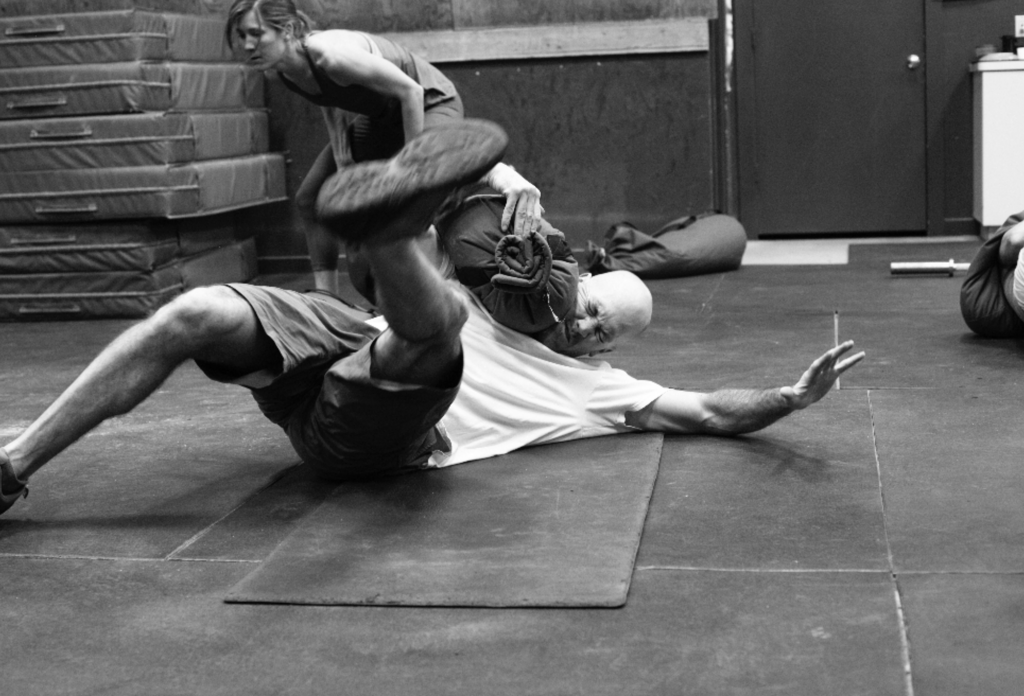


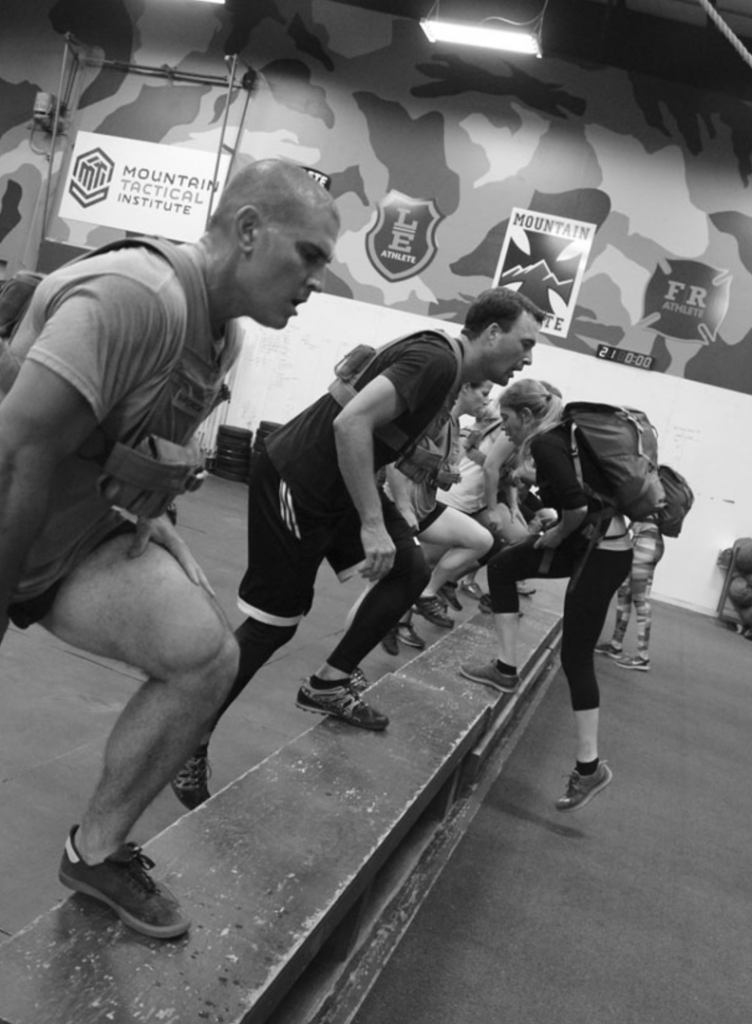



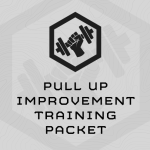 Over the years we’ve developed four distinct programming methodologies for pull up improvement – and found no single methodology performed significantly better than the others.
Over the years we’ve developed four distinct programming methodologies for pull up improvement – and found no single methodology performed significantly better than the others.
